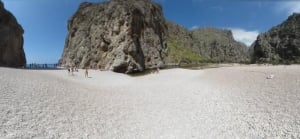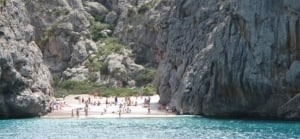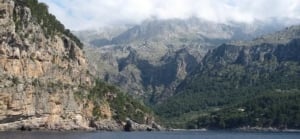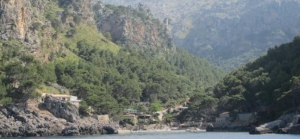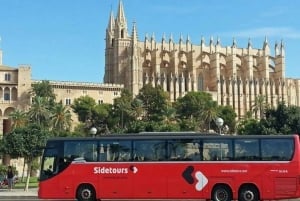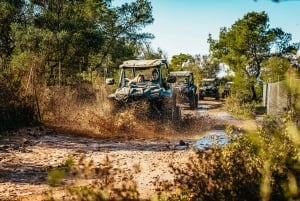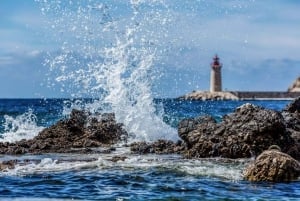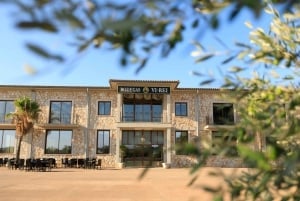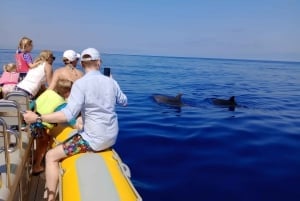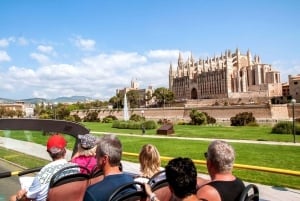Sa Calobra
One of the most spectacular natural places in Mallorca, and therefore one of the most visited, is the stony beach where the Torrent des Pareis (Twin Rivers) finally reaches the Mediterranean sea, having carved a path through the limestone cliffs and gorges of the Tramuntana mountains. The whole area, including the 8 kilometre canyon, has been a declared National Monument since 2003, and it's home to several hundred species of specialised flora and fauna.
Most folk will visit the area by car or tour bus to the coastal village of Sa Calobra by way of the tortuous but exhilarating tar road from the Blue Gorge reservoir - a descent of around 800 metres in 8 kilometres of hairpin (and greater) bends. In calm conditions, a slower and no less spectacular approach is by sea from Port de Sóller - just under an hour along the dramatic rocky coast. Fares are around 23 Euros from the ticket kiosk on the new pier opposite the tram station - you can't book ahead. This is a favourite with cyclists who pay a few Euros extra for their bikes to go on the boat. Unfortunately, the boat trip is not suitable for folk who are restricted to wheelchairs.
Sa Calobra largely consists of restaurants and bars - there are no facilities in the Torrent or at nearby Cala Tuent - but it's all pretty tasteful and the setting is glorious. There's a tiny stony beach here if you want to cool off without getting too far from refreshment. The beach at the Torrent is equally stony but larger, and the Cala Tuent beach front is not only much bigger, but much quieter as well.
From the relative comfort of Sa Calobra it's only a ten minute walk along the cliffs and through a couple of tunnels to the awesome gorge of the Torrent des Pareis - there's no road access to this amazing place. On hot days, drink plenty of water and beware of sun stroke.
Fit and experienced walkers and climbers might like to take on the challenge of traversing the gorge itself - but only when there's been no rain for several days as it can be dangerous (May to September are the safest months). Be aware that it's a 4 to 5 hour walk or scramble, and that mobile phone, GPS, and radio signals often can't penetrate to the bottom of the narrow openings in the 400 metre canyons. Having said all of that, it's a never to be forgotten experience.
However you get there, and whatever you do, you should not miss the chance to visit this outstandingly dramatic and beautiful part of Mallorca.



